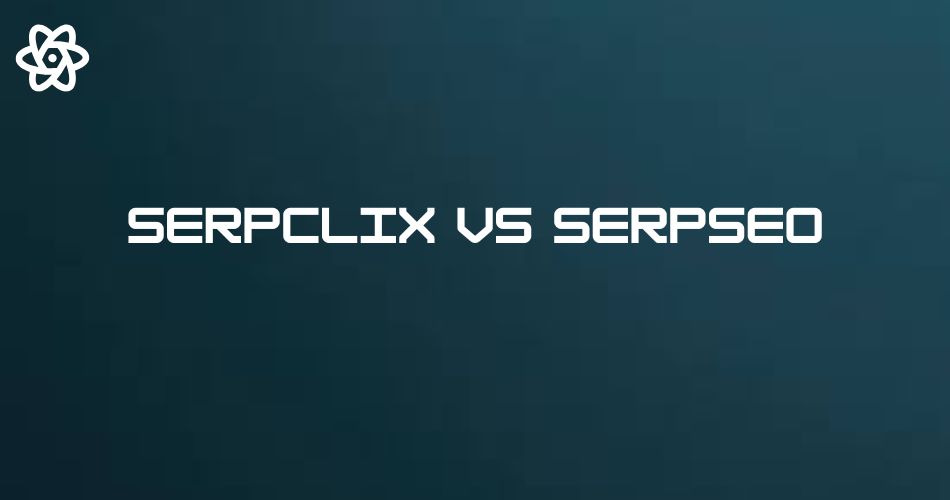In today’s hyper-competitive digital space, climbing to the top of Google’s search results isn’t just about stuffing keywords or building backlinks anymore. The algorithm has become smarter, and user behavior signals—like click-through rate (CTR)—are now playing a bigger role than ever before. That’s where CTR tools like serpclix vs serpseo come in. These platforms promise to boost your rankings by simulating user engagement, especially clicks, on your web pages. But while they both claim to deliver results, their methods, strengths, and effectiveness vary dramatically. If you’re a digital marketer, SEO professional, or small business owner wondering which one to choose, this in-depth comparison will give you everything you need to make an informed decision.
What Makes SERPclix a Standout in the CTR Space?
SERPclix has built a strong reputation for offering human-generated clicks that simulate real user behavior on Google. This is not just some automated script running in the background. Instead, SERPclix connects you with real users who are paid to search for specific keywords, find your link, and click on it—just like a genuine user would. You can define specific keywords, select geographic targeting down to the country or region level, and choose how long users should stay on your website. These factors make it one of the most straightforward and user-friendly CTR manipulation tools available. While it doesn’t offer deep behavioral customization, its simplicity and legitimacy—thanks to using real humans—make it a favorite for marketers seeking fast, low-risk results.
Why SERPSEO is Gaining Ground with AI Power
Unlike SERPclix, which depends on a network of paid clickers, SERPSEO relies on artificial intelligence to generate highly realistic behavioral patterns. These AI-driven interactions go beyond simple clicks—they mimic the entire user journey. The software can simulate scrolling, time-on-site, bounce rate reduction, and even mobile vs. desktop interactions. SERPSEO is particularly valuable for users who need a high degree of customization and automation. With the ability to set up advanced behavioral triggers, SERPSEO makes it nearly impossible for Google to distinguish between real and simulated traffic—when used wisely. This makes it an ideal solution for long-term growth strategies and risk-averse SEO campaigns.
Click Quality: Human vs. AI Behavior Simulation
When it comes to click quality, both tools take very different approaches. SERPclix delivers genuine human interactions, which can be a major trust signal for Google’s ranking algorithm. These real users perform the exact behavior that would be expected from a person genuinely interested in your content. However, SERPclix has limited behavioral depth. In contrast, SERPSEO offers a more advanced form of interaction, but through AI-generated sessions. This includes actions such as clicking on internal links, scrolling through content, or pausing on specific parts of a webpage—all intended to emulate the behavior of a real user. Both methods have their merits: SERPclix provides authenticity, while SERPSEO delivers depth and control.
User Experience Comparison: SERPclix VS SERPSEO
One of SERPclix’s strongest suits is its user interface. It is incredibly simple to get started—sign up, add a campaign, define your keywords, select targeting options, and go live. The dashboard is intuitive and clean, which makes it accessible even for users who aren’t tech-savvy. SERPSEO, on the other hand, comes with a slightly steeper learning curve but offers significantly more control and metrics. Its dashboard is packed with features that allow you to monitor not just clicks but also dwell time, bounce rate, page navigation, and even behavioral flow. If you’re a data junkie, SERPSEO is where you’ll feel at home.
Location Targeting and Audience Control
Targeting is a key factor in CTR manipulation, especially for businesses with location-specific SEO goals. SERPclix allows you to choose countries and sometimes states, depending on availability within their user pool. However, it lacks ultra-granular targeting. SERPSEO fills that gap by offering city-level targeting and even the ability to simulate clicks from mobile or desktop users based on your preference. This level of control can be a game-changer for businesses trying to dominate local SEO niches, such as law firms, dentists, or real estate agents.
Real-Time Performance and Speed of Results
In terms of how fast you can expect results, SERPclix generally delivers quicker outcomes. Because the tool uses real people who click almost immediately after a campaign goes live, you may start to see changes in your SERP rankings within a few days. SERPSEO, while slower to show results, offers more sustainable growth. Its AI takes a more strategic approach, simulating organic traffic trends that build naturally over time. This can be especially useful if you’re trying to stay under the radar and avoid raising red flags with Google’s algorithms.
Which CTR Tool Offers Better Value for Money?
Price is always a factor, and this is where many users might lean toward one tool over the other. SERPclix starts at around $100/month for approximately 200 clicks. While this seems steep, you’re paying for real human interactions, which can be more impactful in certain cases. SERPSEO is more affordable, starting at $79/month, and it comes with a 7-day free trial, which is great for testing. It also offers tiered pricing depending on the level of behavior simulation and traffic volume you need. If you’re working with a limited budget and want advanced features, SERPSEO is the more cost-effective option.
Balancing Risk and Reward with SERPclix VS SERPSEO
One of the most asked questions is whether these tools are safe. The truth is, no CTR tool is entirely risk-free. Google’s algorithms continue to evolve, and any attempt to manipulate search rankings could eventually attract scrutiny. However, the way you use these tools can make all the difference. SERPclix is safer in terms of user quality since it uses actual humans, but if overused, it can still seem unnatural. SERPSEO, while more technical, mimics organic behavior better, thus reducing the chance of detection. The key is moderation—use CTR tools as part of a broader SEO strategy that includes quality content and authentic backlinks.
Real-World Applications: When and Why to Use CTR Tools
CTR tools like SERPclix VS SERPSEO are not one-size-fits-all solutions—they shine best when used in specific scenarios. For instance, if you’re launching a new product, website, or content piece and want immediate visibility, SERPclix’s real human clicks can help accelerate early ranking traction. Similarly, if you’re targeting highly competitive keywords where your on-page SEO is already solid, using CTR manipulation can push your page just enough to edge out competitors. On the other hand, SERPSEO is better suited for long-term campaigns like evergreen content, authority blog building, or nurturing high-ticket landing pages. Its simulated behavior works in the background like a slow-burning engine, helping build trust with Google over time. Understanding when to deploy these tools can make the difference between temporary gains and long-lasting success.
Combining CTR Manipulation with Traditional SEO Strategies
No matter how powerful tools like SERPclix VS SERPSEO are, they should never be your only strategy. They work best when combined with tried-and-tested SEO fundamentals like publishing high-quality content, building natural backlinks, and maintaining excellent site speed and mobile responsiveness. Think of CTR tools as a performance booster for your SEO engine—not the engine itself. Use them to amplify results on pages that are already ranking between positions 5–20, not to resuscitate pages stuck on page 10. A well-rounded SEO campaign that uses CTR tools sparingly and smartly will always outperform one that relies solely on manipulation. Ultimately, your goal should be to use tools to guide Google’s attention—not to deceive it.
What to Watch Out for in Future Google Updates
Google is constantly refining its search algorithm, and behavioral metrics are under increased scrutiny. While SERPSEO’s AI attempts to mimic realistic sessions, and SERPclix relies on human activity, future updates may further improve Google’s ability to identify unnatural engagement patterns. That’s why it’s essential to stay informed about SEO trends and adapt your strategies accordingly. If Google shifts toward emphasizing user intent or deeper session analytics, tools that offer shallow or repetitive behavior may become ineffective—or even harmful. Keeping your use of CTR tools subtle, diversified, and combined with genuine user engagement signals (like social shares or organic backlinks) will help you stay ahead of the curve without risking penalties in future core updates.
Customer Support and Community Resources
Support quality can be a deal-breaker, especially if you’re investing hundreds of dollars per month. SERPclix offers decent support, primarily through email, and response times are usually within 24 to 48 hours. It’s a bit limited, but functional. SERPSEO offers more robust support options, including live chat and access to a vibrant Discord community where users share tips, troubleshoot issues, and discuss best practices. If community involvement and peer support are important to you, SERPSEO might be the better fit.
Final Verdict: Which Tool Is Better for You?
The decision between SERPclix VS SERPSEO ultimately depends on your SEO goals, budget, and risk tolerance. If you’re looking for fast, real clicks that appear highly authentic, then SERPclix is a solid choice—especially for short-term campaigns or local SEO pushes. On the other hand, if you want more control, better scalability, and realistic session behavior that evolves over time, then SERPSEO is likely the better long-term investment. Some advanced users even use both tools strategically—SERPclix for quick wins and SERPSEO for ongoing growth. Just be careful not to mix them on the same campaigns.
Conclusion
Both SERPclix VS SERPSEO have carved their niches in the evolving landscape of SEO. While one leverages the authenticity of human behavior, the other harnesses the precision of artificial intelligence. Neither tool is perfect, but when used wisely and sparingly, they can be powerful allies in your digital marketing arsenal. Choose based on your campaign needs, and remember—CTR manipulation should supplement, not replace, a solid SEO foundation built on value-driven content and ethical backlink strategies.
Discover More Engaging Reads:
- Gimkit: A Fun and Interactive Learning Tool for Students
- Gimkit Join: Revolutionizing Classroom Engagement with Game-Based Learning
- Gimkit Home: Transforming Education with Gamified Learning
- Gimkit Code: A Complete Guide to Enhancing Student Engagement
- l_mbsau_e: Unlocking the Power of a Digital Alias in the Modern Web



